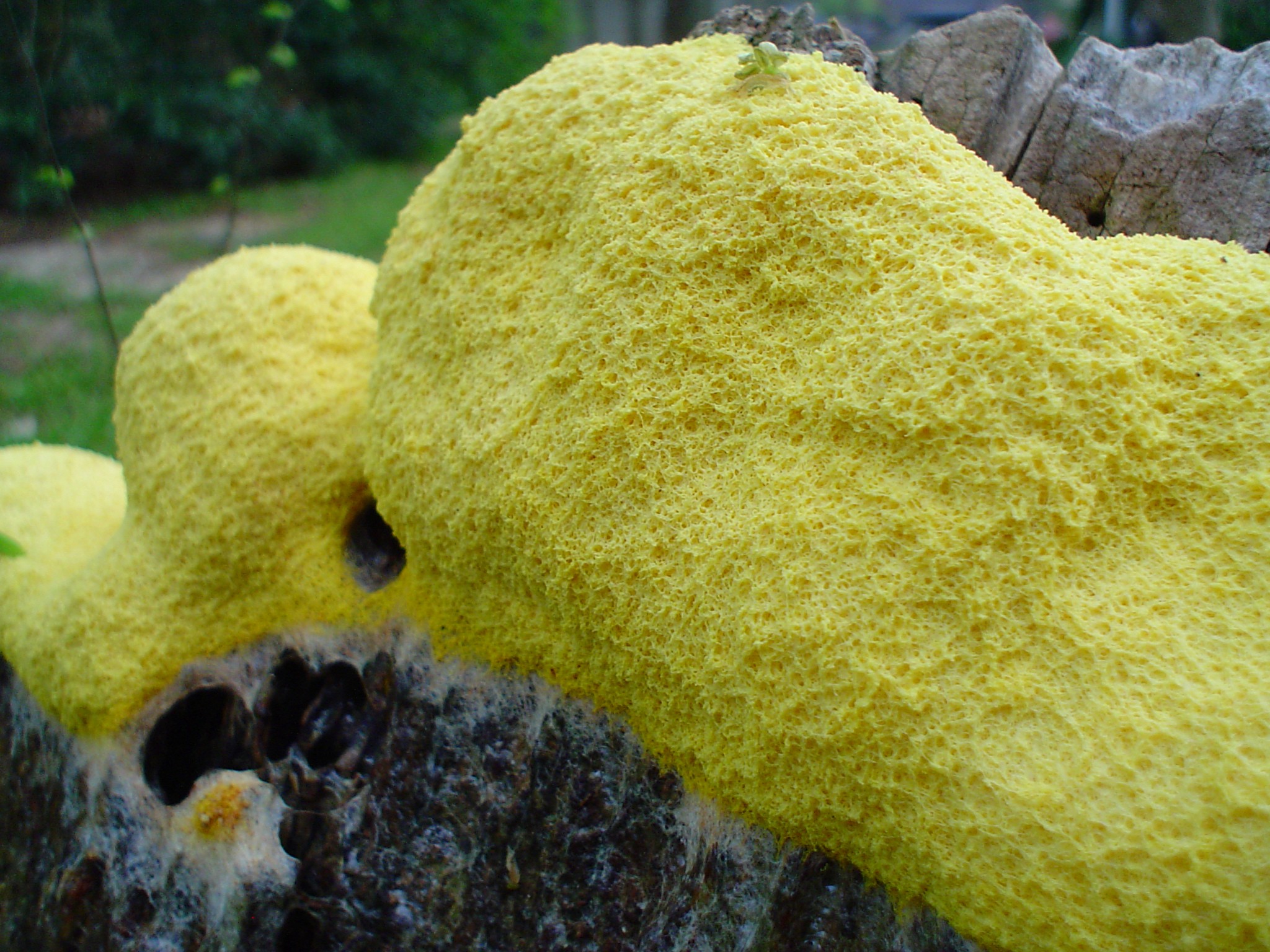There are over 300 strains of mold that can be found in homes in the United States with many varying colors. If you have discovered yellow mold, also commonly called slime mold, in your house you are likely wondering what exactly it is, how it got there and how to get rid of it. Mold in a home typically grows in damp areas like the basement or bathroom. Mold and mildew are most often found under leaky sinks or faucets, leaky windows or ceilings or attics when the roof is leaking. There are also many cases of yellow mold under houses. All of these provide the perfect climate for mold to grow and thrive. There are many different kinds of mold and many different colors including; black, white, brown, green and yellow. You may be a bit surprised if you discover yellow mold as mold typically presents as black or gray.
If you have mold in your property call (855) 460?0914 for a free mold remediation estimate anywhere in the United States!
Types of Mold That Are Yellow
There are several types of fungus that can appear yellow in color including:
- Aspergillus ? some forms of aspergillus will appear yellow in color. This is a very common household mold that can be found anywhere there has been any kind of water damage.
- Serpula lacrymans ? This may be discovered as yellow fungus on wood. It is often called house eating mold because it feeds on wooden structures and quite literally eats away at the house.
- Mucor ? This mold strain is initially yellow or white in color but eventually turns to gray. This is one of the fastest growing strains of mold and has very dangerous side effects when exposure occurs. This mold strain can cause a life-threatening infection called Mucormycosis where the mold invades the blood vessels in the body, causing the blood supply to be compromised.
- Epicoccum Nigrum ? This strain of mold ranges in color from yellow to orange to a light brown color. This is another very rapidly growing strain of mold that can be found on a myriad of different household surfaces including; mattresses, carpets, wood, drywall and painted furniture.
- Geomyces Pannorum ? this strain of yellow mold is unique in that it thrives in cooler environments whereas most other mold strains prefer warmer climates. This type of mold is common in the northern hemisphere, but not so much in the south. It is a yellow-brown color and can be found on many different damp materials including; walls, floors, wood and paper.
You will not be able to determine the type of mold by just looking at it. You may be wondering if yellow mold is toxic, but in general all types of mold carry potential dangers and will need to be remediated. According to the Centers for Disease Control (CDC) all mold presents dangers and should be removed. The CDC does not recommend testing the mold to determine what type it is. If you would like to learn more about testing mold and determining when it is a good idea to do it.

Is Yellow Slime Mold Dangerous and Is it Toxic?
Regardless of the color of the mold, any kind of household mold is harmful to the home and its inhabitants. Many people are allergic to Aspergillus and find that when exposed to it they experience respiratory problems, hives and an itchy rash. Exposure to Serpula Lacrymans can also create respiratory problems including coughing, sneezing, trouble breathing and a sore throat. Mucor strains tend to be some of the more dangerous strains. Some people are more susceptible to mold related illness than others, however, exposure to any kind of mold over a period of time is harmful to everyone.
If you are experiencing symptoms associated with mold exposure, be sure to consult your doctor as soon as possible and make sure that you specify that the mold is yellow mold as this information can affect the treatment you receive. If you are diagnosed with a mold related allergy or illness, your doctor will likely recommend that you rid your home of all of the mold as soon as possible in order to recover. Infants, children, elderly people and pregnant women are all at a higher risk of suffering negative effects from exposure to yellow fungus. So is yellow mold dangerous, and what precautions should you take?
If you have serious respiratory problems such as asthma, emphysema or chronic obstructive pulmonary disease (COPD), it is wise to check with your doctor if you know you have been exposed to mold in your home. Share this information with your doctor even if you are not experiencing any new symptoms related to mold exposure. The same goes is you have or are experiencing any kind of illness that affects the immune system.
Safely Removing Yellow Mold
Removing mold from your home is no easy feat. There are many difficulties that can be encountered along the way including the fact that the mold often grows in places that are not easily seen. You my find yellow mold on a ceiling, inside walls, under carpeting and inside your heating and ventilation ducts. Mold also spreads very easily, so when you are cleaning up and removing mold it is very easy for some of the spores to be spread accidentally throughout your home which in turn will make your mold problem even worse. Lastly, those mold spores that scatter throughout the home can be very easily inhaled which can cause all of the previously listed medical issues to arise again. If there is have yellow mold on basement walls in your house, strict safety precautions must be put into place before beginning any mold removal or remediation process. You must also take steps to protect yourself during the mitigation process by wearing personal protective gear and a respirator mask.
If you discover a large amount of mold in your home or are experiencing mold related health problems, the U.S. Environmental Protection Agency recommends hiring a professional crew to clean up and fully remove the mold from your home.
Call (855) 460?0914 for a free quote from a professional!
Whether you decide to hire a professional to get the job done or you want to do it yourself, we strongly recommend that you hire a professional at least to have a consultation and survey of your home. You will find a great deal of benefits from having an expert check out your mold situation. Many companies offer free estimates so there would not be a financial burden on your part and they can help you to identify all instances of mold, classify the type and give you an idea of what the remediation process will look like. We suggest having at least two different companies come give free estimates.
How to Prevent Mold
Mold will happily and quickly grow anywhere where there is moisture. In nature, mold serves an important purpose by helping to destroy organic materials such as leaves which will then enrich the soil. Inside, however, mold can cause some serious health issues for the home?s inhabitants.
Start by checking the areas of your home where there could be humidity or water damage. These areas include, but are not limited to; basements, attics, crawl spaces, kitchens and bathrooms. Yellow fungus can begin to grow on a surface within 24 to 48 hours of the surface getting dampened and will produce spores that travel through the air. These yellow mold spores will then break down whatever they are growing on and cause mild to severe health complications for you and your family.
Next, arm yourself with the correct tools:
- Latex or rubber gloves
- Buckets and brushes
- A vacuum with a brush attachment
- Mops and sponges
- Detergent, soap or commercial cleaner that is non amonia
- Disinfectant chlorine bleach
- Furniture polish
Prevent Yellow Mold In The Bathroom
The bathroom in your home likely sees more moisture than any other room in your home. Here are some tips to prevent yellow mold in your bathroom:
- Spread towels out after use so that they dry more quickly
- Minimize the number of soap containers left in your shower for easy cleaning and better circulation
- Wipe down your shower with a clean towel, squeegee or a specialized after shower cleaner mist after the last shower of the day
- Choose a shower curtain that dries and cleans easily to avoid soap scum build up which will foster the growth of mold
Freshen Fabric, Upholstery and Carpeting:
- Take fabric and upholstery that is mobile outside where you can brush off most of the mildew
- Fabrics will need to be laundered in chlorine bleach and hot water. If cleaning with Chlorine bleach is not safe for the fabric, soak the fabric for at least an hour in Oxygen bleach before washing as directed. These fabrics should then be hung outside to dry if possible.
- Upholstery that you are unable to take outside will need to be vacuumed thoroughly first. After vacuuming, empty the canister outside or replace the bag. Next, create a solution to cleanse the upholstery using one cup of ammonia and one cup of warm water. Use a clean sponge to scrub the stains, blotting the area until all of the moisture has been removed. Repeat this process until the mold stain disappears. To remove the remnants of the ammonia solution, blot the area with cold water and blot dry. Lastly, make sure to dry the area fully using a fan or a hair dryer on the cool setting.
You can help to keep your home free of mold and mildew by following a few easy tips:
- Make use of fans and dehumidifiers in your home and open the windows to help reduce the amount of moisture in your home. This is especially important during hot, humid summer months.
- Get any plumbing leaks fixed at the first sight of the problem.
- Take necessary steps to prevent rain water from entering your home. Check areas that have potential to create a problem regularly.
- Wash the fabrics in your home routinely and be sure they are thoroughly dried.
- Keep storage items in dry, well ventilated areas. Plastic totes with lids are a great idea for attic and basement storage.
We do not recommend that you try to clean and eradicate the mold yourself as there are potential dangers involved as well as the risk of spreading the mold spores further. Yellow fungus can be hidden in places where you may not even think to look or may not have the resources to access. Don?t let you or your family suffer from the harmful effects of mold. Small, isolated instances of mold may be treatable without the expertise of a professional by following some of the tips above, but we do strongly encourage homeowners get a free mold and mildew assessment on a regular basis. Similarly, we strongly encourage homeowners to follow the tips listed above to help prevent the growth of mold in your home.
If you have mold in your property call (855) 460?0914 for a free mold remediation estimate anywhere in the United States!


